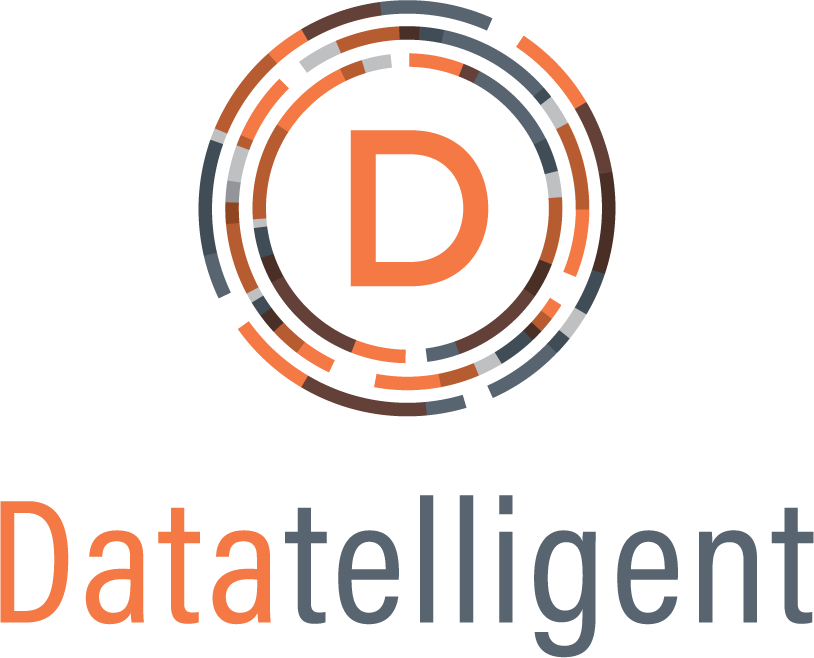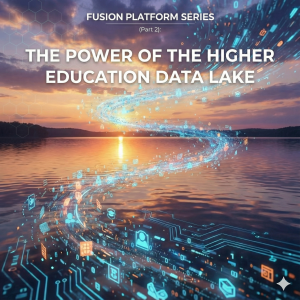Top Data Challenges in Higher Education
INTRODUCTION
I’ve been in my current position at Datatelligent for a little over a year as a business development representative and have talked to many different leaders in higher education. My job is to hear the data challenges that individuals might be facing and discover strategies and solutions for institutions to turn these challenges into strengths. I’ve sat in hours of meetings, webinars, and speeches. Also, I have listened to Directors of Institutional Research, Directors of Institutional Effectiveness, and CIOs spill their challenges to me and strategize what steps they need to take to put a plan in place to improve their data maturity. From my discoveries, I’ll provide the top three data challenges currently in Higher Education for 2024. Also, I want to give some tips on how to avoid these challenges based on what I’ve learned.
DATA SILOS
For one thing, if you’re currently involved in higher education or have been in the past, I’m sure you experienced data silos or have heard from fellow peers the headache it can cause daily. Here are some of the headaches:
- Fragmented Decision-making: Data silos hinder collaboration and lead to fragmented decision-making within institutions.
- Inefficient Reporting: Siloed data is crucial for generating accurate reports, but it is time-consuming and error-prone.
- Personalization Obstacles: Integrated data is crucial for personalized student experiences, but silos prevent the practical tailoring of services.
- Strategic Implications: Addressing data silos requires breaking down barriers, investing in infrastructure, and fostering a data-driven culture.
In 2024, we want our day-to-day operation to go smoothly and get all the data we need at our fingertips. Data silos have been throwing a wrench in this for a long time and are a top three challenge, I hear.
DATA SECURITY AND PRIVACY
TURNING DATA INTO ACTION
Lastly, you collect all the data you need, but using it effectively is another challenge. Many schools fail to transform the data into meaningful actions that drive positive outcomes. It requires defining clear objectives, selecting the right analytic tools, and translating insights into actionable steps. Balancing ethical considerations and fostering a data-driven culture are essential for success. Turning data into action is mentioned when talking to many individuals in higher education who don’t know the correct steps to take.
HOW CAN I AVOID THESE?
As I’ve mentioned, I have listened to countless meetings and read about many possible solutions for these challenges. Some things I recommend for becoming a more data-informed institution are:
- Consolidate Data: Bring together data from disparate tools and datasets into a central data warehouse with good reporting tools. We at Datatelligent can help with this and recommend using a cloud-based data warehouse called Snowflake. Snowflake has great elastic scalability, robust security features, and seamless integration with popular BI tools and data services. This allows institutions to gain a more holistic view of learning processes and support mechanisms. How universities can break down data silos and generate new insights | THE Campus Learn, Share, Connect (timeshighereducation.com)
- Advanced Reporting Tools: Advanced reporting tools like Tableau and Power BI can be beneficial for summarizing, visualizing, and comparing data. These tools provide better insights than standard tabular reports. At Datatelligent, we can help with this by having our own Datatelligent Platform for Higher Education that can consolidate data and provide data visualization tools like Tableau and Power BI.
- Privacy Offices: Establish privacy offices and full-time privacy positions within institutions. Develop and improve privacy and practices.
- Compliance Management: Manage Compliance across campus operations by understanding and adhering to privacy legislation and regulations.
- Data-Driven Thinking: Leverage data analytics by encouraging data-driven thinking. Areas where data analytics can be beneficial include personalized learning experiences, academic analytics, and critical care assessments. Towards Evidence-Based, Data-Driven Thinking in Higher Education | SpringerLink
- Optimize Data Strategy: Focus on data governance, create data leadership, establish actionable data strategies, utilize a cloud data platform to centralize data, create an analytics team, and implement data visualization tools like Power BI and Tableau.
CITATIONS:
- Burns, Sean. “The Evolving Landscape of Data Privacy in Higher Education.” Educause, November 19, 2020. https://www.educause.edu/ecar/research-publications/the-evolving-landscape-of-data-privacy-in-higher-education/introduction
- Komljenovic, Janja. “The future of value in digitalized higher education: why data privacy should not be our biggest concern.” Springer Link, November 19, 2020. https://link.springer.com/article/10.1007/s10734-020-00639-7
- Gibson, David. “Big Data in Higher Education: Research Methods and Analytics Supporting the Learning Journey.” Springer Link, July 5, 2017. https://link.springer.com/article/10.1007/s10758-017-9331-2
- Florea, Diana and Florea, Silvia. “Big Data and the Ethical Implications of Data Privacy in Higher Education Research.” MDPI, October 21, 2020. https://www.mdpi.com/2071-1050/12/20/8744
- Times Higher Eduation. “Five actions for data-led transformation in Higher Education.” https://www.timeshighereducation.com/hub/p/five-actions-data-led-transformation-higher-education
- Masterson, Douglas, PhD, Davis, Christopher M., PhD, and Carbonaro, Suzanne, MEd. “Transforming Data into Meaningful Information.” The Society for College and University Planning, Jan-Mar 2023. https://www.scup.org/resource/journal-transforming-data-into-meaningful-information/




